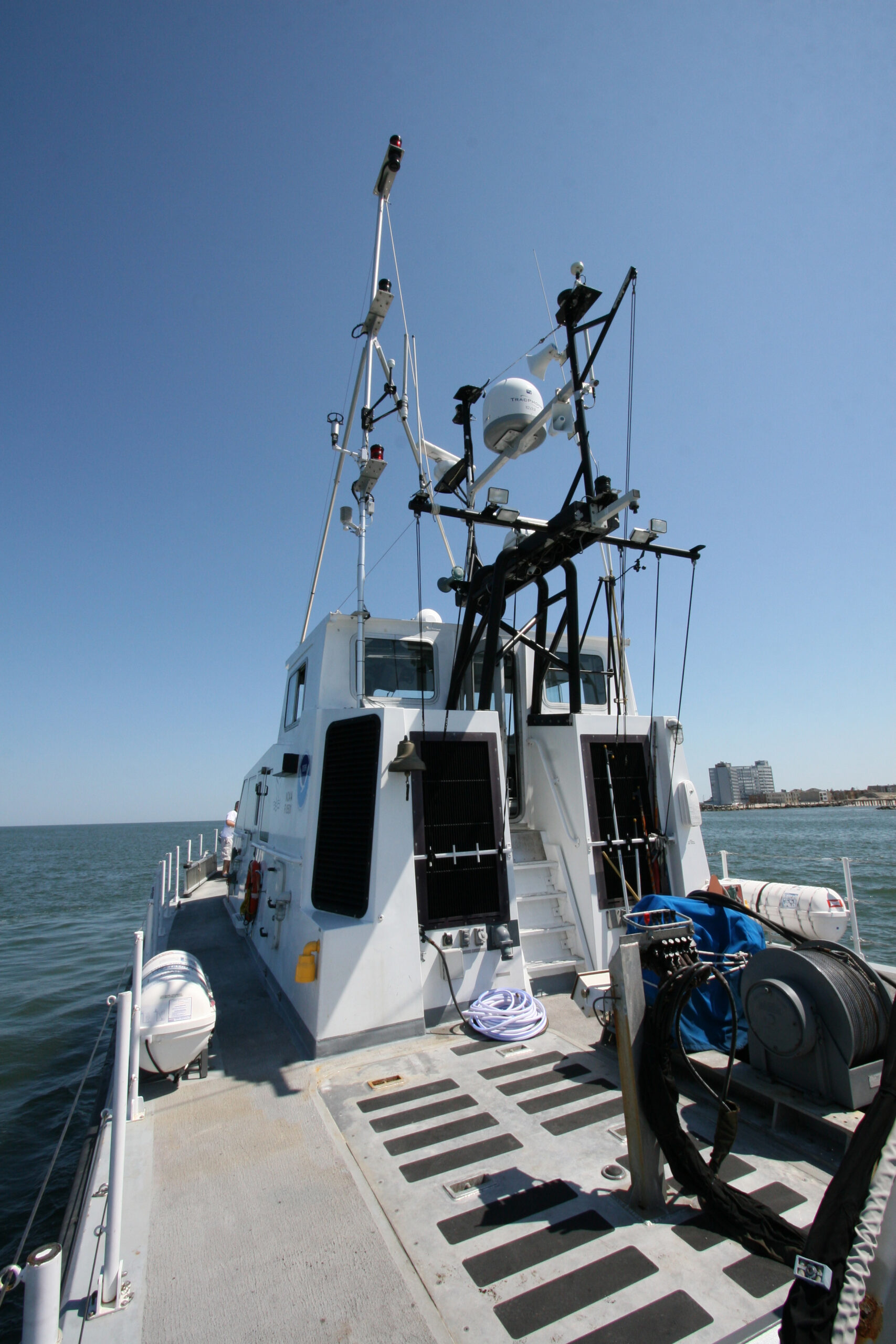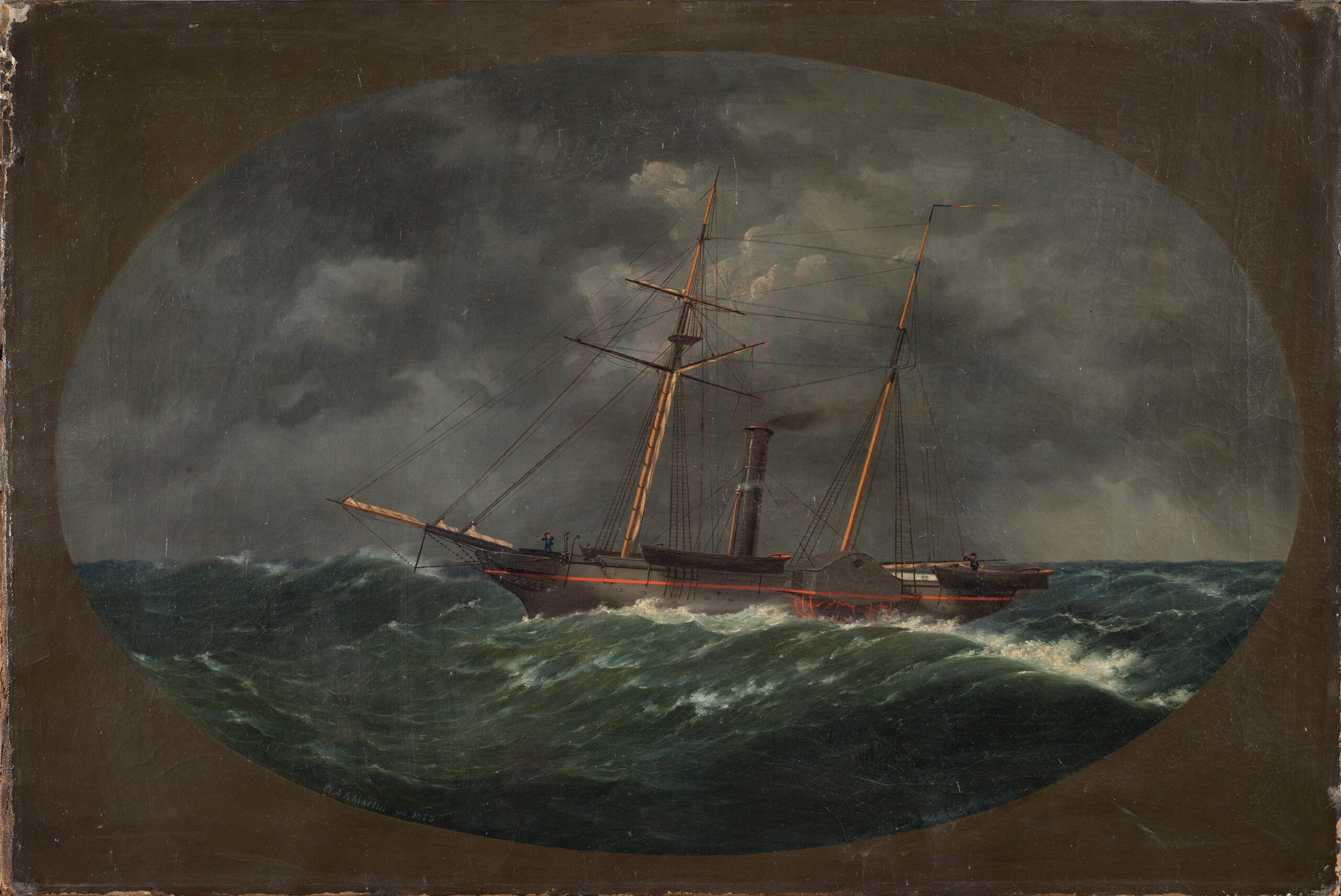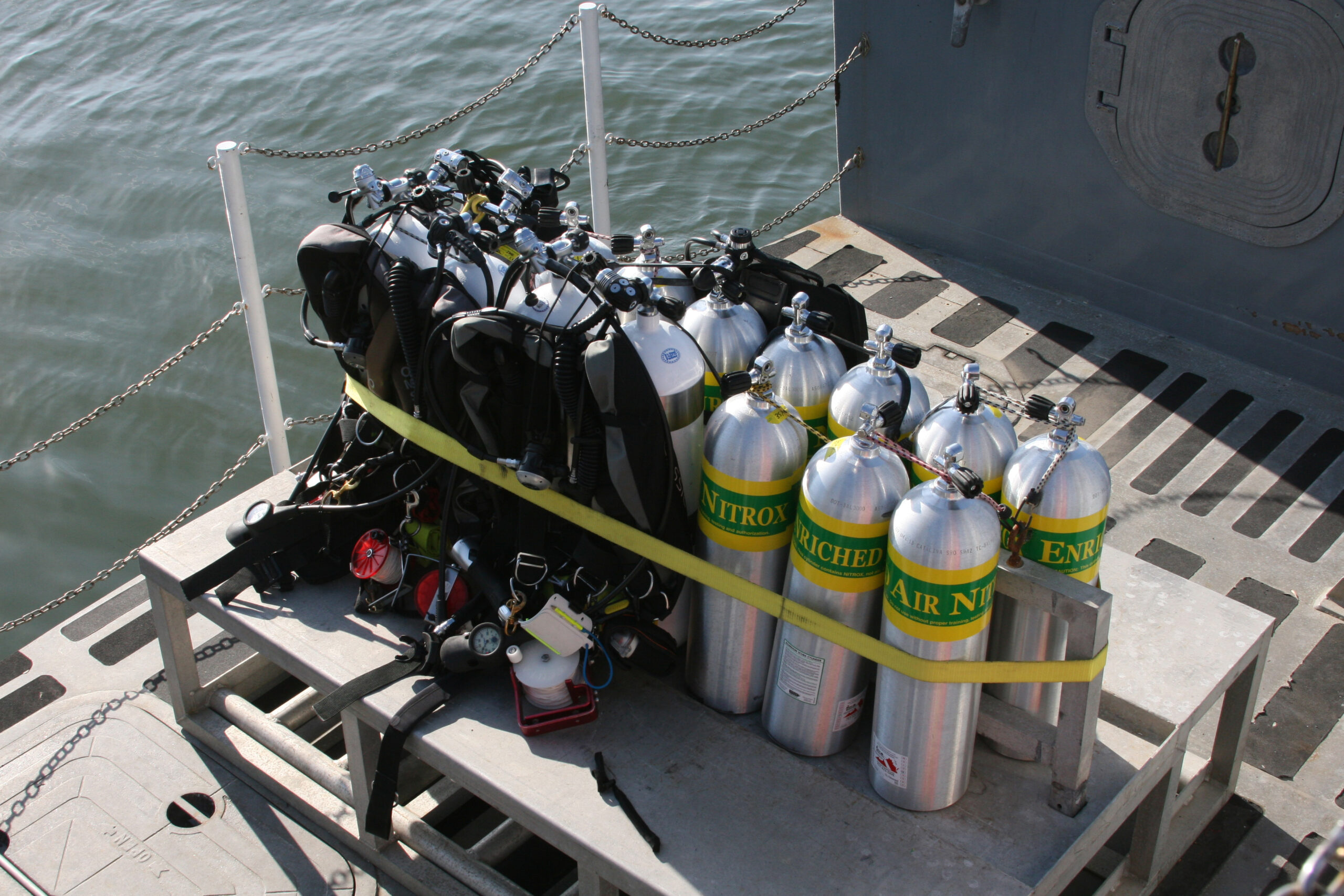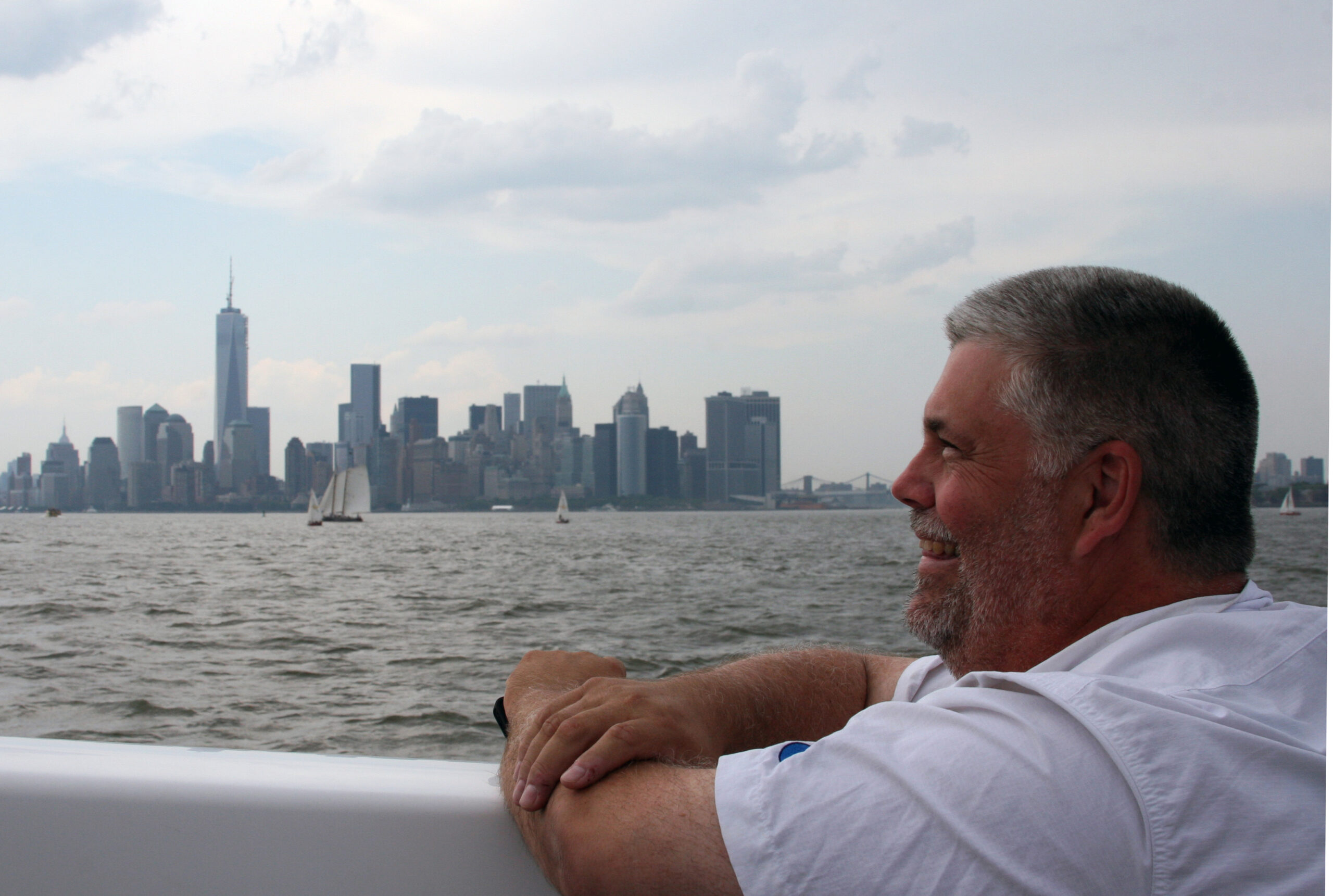It’s late Tuesday evening. The phone rings. It’s Dave Alberg, Superintendent of NOAA’s Monitor National Marine Sanctuary. “We’re taking our research vessel SRVX off the coast of Atlantic City to hopefully identify an old shipwreck. We have one empty spot on the boat. It’s yours if you want it.”
“I’m in!”, I excitedly yell into the phone. So much for staying calm and playing it cool…
As Dave continues to describe details about the trip, my mind starts swimming in a world somewhere between reality and fantasy. Visions of scientific exploration and shipwrecks morph into Jules Verne’s 20,000 Leagues Under the Sea. I imagine a giant squid’s massive life-sucking tentacles wrapped around the SRVX. Exploration and adventure. The stuff of legend.
“Where’s the boat docked and when do we leave?”
It’s now Thursday evening and Dave and I meet up with the rest of the crew at Little Creek in Norfolk. It’s a crew fit for a movie; equal parts brilliant and talented mixed with a dash of crazy. Russ Green, Deputy Superintendent of Thunder Bay National Marine Sanctuary and a veteran diver; Tane Casserley, Marine Archaeologist with NOAA and a descendent of a Maori chief; Pasquale DeRosa, a skilled captain who knows the SRVX inside and out; two other licensed captains from the National Marine Sanctuary Program round out the crew.

It’s nearly 10:00pm when we throttle out of the Chesapeake Bay Bridge. “The seas shouldn’t be too bad,” I think to myself. But even though the SRVX is almost 90-feet in length, she starts to rock and roll as soon as we get out into open water and head north. Dave, Tane, and I hold on for dear life as we go flying off our bunks in the forward berth. “Scratch that last thought, it’s gonna be a long night.”
After a sweaty night of fitful sleep, I awake early and walk out on deck. It’s bright and sunny, the New Jersey coastline is clearly visible on our port side, and Pasquale begins a long, slow turn toward Atlantic City. We pull up to the pier at the Coast Guard station expecting to meet our other divers and remote sensing experts. Instead, we are greeted by a 175-pound dog named Nucky. He is the Coast Guard station guard dog and he’s all business. He backs down but only after we toss him a few pizza crusts. He gobbles them up quickly, leaving behind nothing but crumbs and a puddle of drool.
The rest of the crew eventually arrives, including Jim Delgado and Dan Basta of NOAA. Everyone gathers in the main galley and Jim briefs us on the mission. Divers will be sent down on a wreck site located 12 miles off the beach in 90 feet of cold, dark water. The wreck is the only major site yet to be positively identified by the robust New Jersey recreational diving community. Our divers are to take photos and videos of the site for comparison with original plans and engineering drawings of the Robert J. Walker, a United States Coastal Survey ship that sank after colliding with another vessel in 1860, taking twenty of her crew to the bottom. It was the largest loss of life for the ancestor agency of modern-day NOAA.
During the briefing I show the team a high-resolution photo of a painting of the Robert J. Walker, part of the museum’s general collection. The image depicts the sinking but also reveals important details about the appearance of the vessel. Jim is excited to see the photo of the painting as he had recently funded its conservation with the goal of public display.
Tane, Russ, Dan, and Matt from Stellwagen Bank Sanctuary take notes and prep for the dive as we motor offshore. The SRVX is positioned directly above the wreck coordinates. Russ and Matt splash in the water first, followed by Tane and Dan. There is some visible frustration as they surface almost 30 minutes later. “We couldn’t see anything. We know it’s down there, but we just couldn’t find it!”
That’s when Vitad Pradith, a remote sensing wizard with the Coast Survey’s Navigation Response Branch, stepped up to the plate. He quickly reviews his recent survey data and recommends repositioning the vessel. Minutes later, divers splash again and are underwater for another 30 minutes. Dave and I stand watch on the bow and track the divers’ bubbles rising slowly from the seafloor. The divers re-appear on the port side. Both teams give a thumbs-up and climb aboard the stern of the SRVX. The divers are smiling and talking, and we can only assume they had a great dive.
The group assembles to review the pictures and film. Although visibility is generally poor and dark, their images are incredible. A badly corroded and concreted engine assembly is clearly visible, as are slightly canted paddle wheels. Matt shows video footage (http://oceanservice.noaa.gov/news/weeklynews/aug13/walker.html) of a mid-19th century glass bottle resting on the seafloor next to what appears to be a wool blanket or coat. The wool gently flutters back and forth in the light current. Tane and Russ compare measurements from their dive slates with original engineering drawings, and we review other data that NOAA has gathered from the site in prior days.
After careful consideration and evaluation, Jim and Dan confirm that the wreck is indeed the Robert J. Walker. Everybody aboard the SRVX shakes hands but remains somewhat somber, realizing that this is indeed the same vessel that took 20 of her crew to their deaths. We walk quietly to the bow and observe a brief moment of silence, followed by a few words of remembrance from Jim.
Soon we are underway again, and the smell of food wafts up from the galley. While we eat dinner around the cramped table, the mood lightens and we all trade a few laughs and stories. They ask me questions about conserving the Monitor; I ask them what it is like to dive beneath the waves in search of shipwrecks. During the meal, I can’t help but think about the amazing technical skills and abilities of the people around me and of the possibilities for future collaboration.
It has been almost three months since our successful expedition but the taste of adventure still remains. And so does my optimism that NOAA and The Mariners’ Museum will broaden our partnership and continue to explore the great depths of the ocean and her many mysteries in the coming years.


